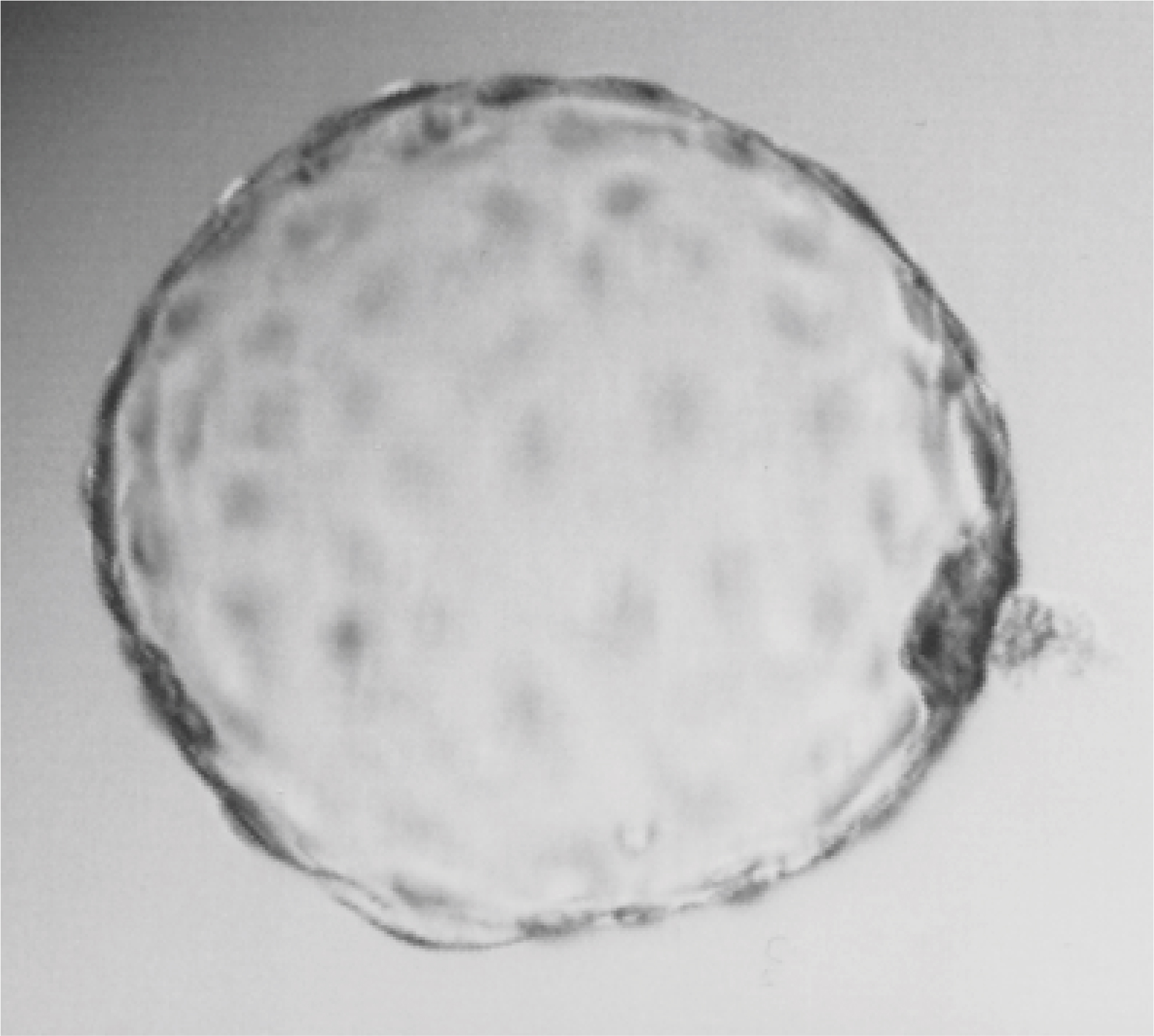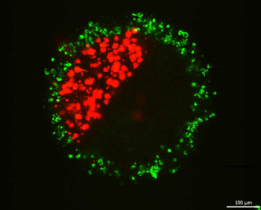It is estimated that as many as 70% of human conceptions are lost early in gestation, with most occurring prior to recognition of the missed menstrual cycle. Our Center is working to understand events of early embryogenesis and implantation, in order to understand underlying causes of miscarriage, and increase the success of assisted reproductive technologies, including in vitro fertilization.

Improving success of in vitro fertilization.
This project aims to identify factors that are associated with IVF success. Our researchers have studied early embryos at the blastocyst stage of development. Blastocysts are made up of three cell types, trophectoderm (which will form the placenta and fetal membranes), embryonic stem cells (which will form the fetus), and primitive endoderm (which will form the yolk sac). By comparing high-quality and low-quality embryos, we have made the novel discovery that the major difference between them is the number of primitive endoderm cells, suggesting that these cells play a critical role in the normal development of the other two cells types. Using single cell RNA sequencing techniques and computational analysis, we are now exploring how these three cell types communicate during early embryogenesis.

STEMbryo: Modeling the early embryo using stem cells.
As an alternative to the use of donated human embryos, researchers at our Center are using stem cells to model early events in embryogenesis. Recent research with mouse cells has shown that when embryonic stem cells (which eventually form the fetus) are combined with trophoblast stem cells (which form the placenta) in a dish, they self-assemble into structures that resemble an early embryo; this system may be improved by addition of the third cell type – primitive endoderm. By combining these stem cells together, including ones with alterations in specific genes, it is possible to evaluate the role of specific genes in each cell type, and their contribution to proper development and implantation of the early embryo. Using this approach, we aim to study mechanisms that lead to implantation failure and miscarriage.